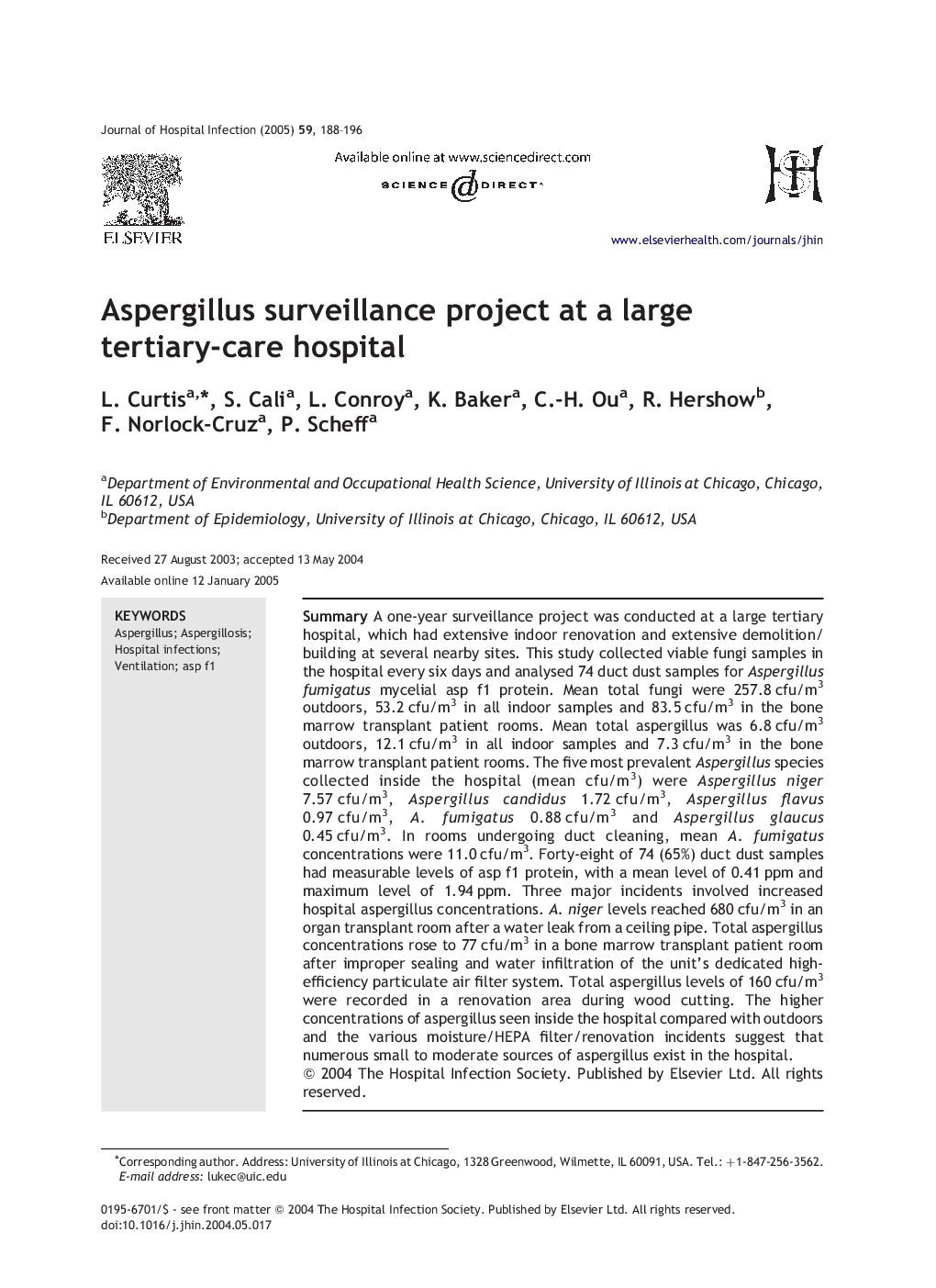| Article ID | Journal | Published Year | Pages | File Type |
|---|---|---|---|---|
| 9269399 | Journal of Hospital Infection | 2005 | 9 Pages |
Abstract
A one-year surveillance project was conducted at a large tertiary hospital, which had extensive indoor renovation and extensive demolition/building at several nearby sites. This study collected viable fungi samples in the hospital every six days and analysed 74 duct dust samples for Aspergillus fumigatus mycelial asp f1 protein. Mean total fungi were 257.8Â cfu/m3 outdoors, 53.2Â cfu/m3 in all indoor samples and 83.5Â cfu/m3 in the bone marrow transplant patient rooms. Mean total aspergillus was 6.8Â cfu/m3 outdoors, 12.1Â cfu/m3 in all indoor samples and 7.3Â cfu/m3 in the bone marrow transplant patient rooms. The five most prevalent Aspergillus species collected inside the hospital (mean cfu/m3) were Aspergillus niger 7.57Â cfu/m3, Aspergillus candidus 1.72Â cfu/m3, Aspergillus flavus 0.97Â cfu/m3, A. fumigatus 0.88Â cfu/m3 and Aspergillus glaucus 0.45Â cfu/m3. In rooms undergoing duct cleaning, mean A. fumigatus concentrations were 11.0Â cfu/m3. Forty-eight of 74 (65%) duct dust samples had measurable levels of asp f1 protein, with a mean level of 0.41 ppm and maximum level of 1.94 ppm. Three major incidents involved increased hospital aspergillus concentrations. A. niger levels reached 680Â cfu/m3 in an organ transplant room after a water leak from a ceiling pipe. Total aspergillus concentrations rose to 77Â cfu/m3 in a bone marrow transplant patient room after improper sealing and water infiltration of the unit's dedicated high-efficiency particulate air filter system. Total aspergillus levels of 160Â cfu/m3 were recorded in a renovation area during wood cutting. The higher concentrations of aspergillus seen inside the hospital compared with outdoors and the various moisture/HEPA filter/renovation incidents suggest that numerous small to moderate sources of aspergillus exist in the hospital.
Related Topics
Life Sciences
Immunology and Microbiology
Applied Microbiology and Biotechnology
Authors
L. Curtis, S. Cali, L. Conroy, K. Baker, C.-H. Ou, R. Hershow, F. Norlock-Cruz, P. Scheff,
